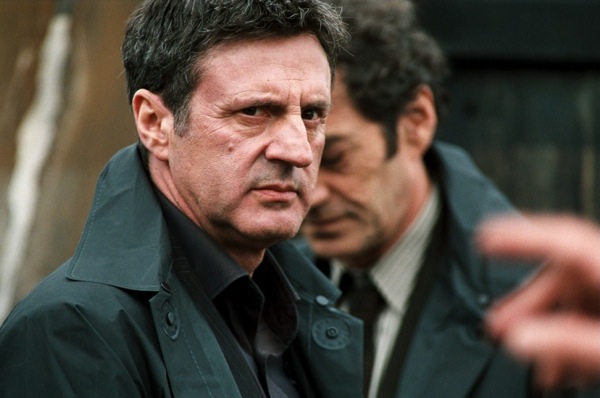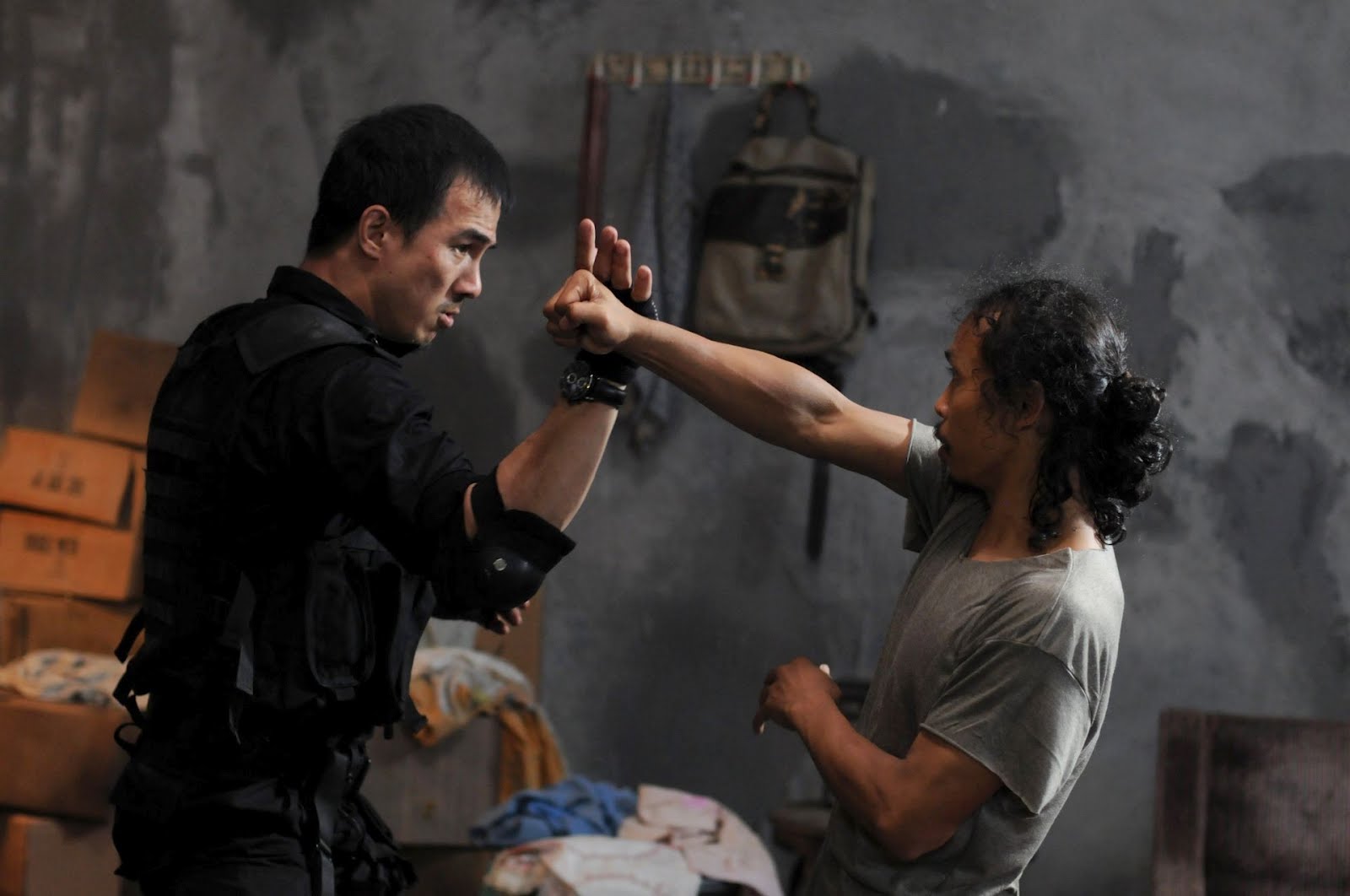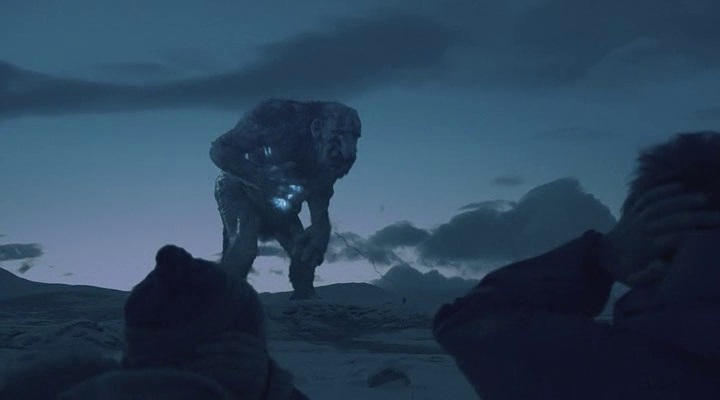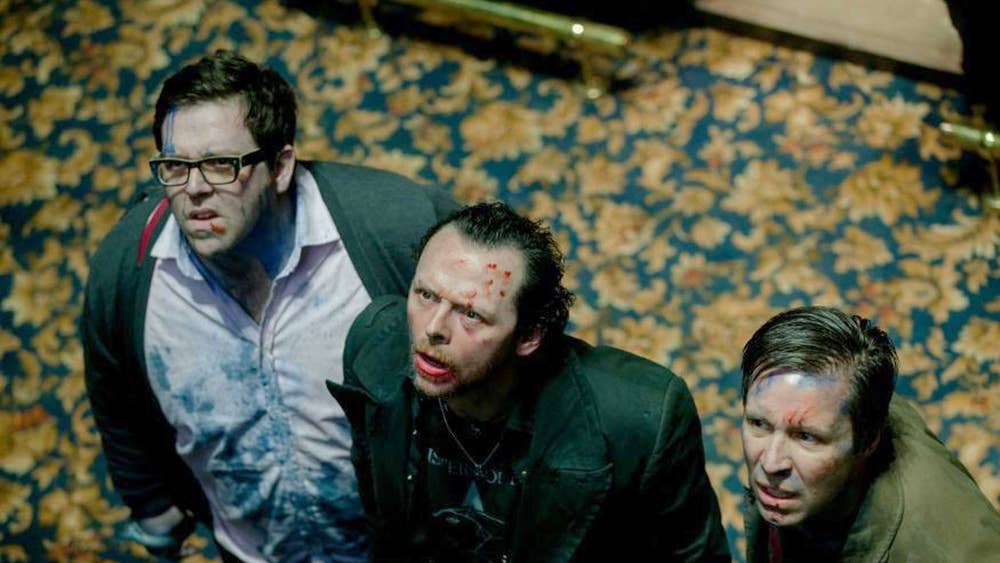6. 36 Quai des Orfèvres (2004)

Olivier Marchal came out in the 2000s with great crime stories that were always gritty and realistic. In fact, before becoming an actor and director, Marchal was a policeman; he lived and experienced similar situations that became inspirations for his movies.
“36 Quai des Orfèvres” tells the story of a feud between two police officers – Léo Vrinks (Daniel Auteuil), chief of the Research and Intervention Brigade, and Denis Klein (Gérard Depardieu), chief of the Banditry Repression Brigade – for catching a gang of robbers who are guilty of murdering nine people. The fight will be intensified by the possibility of a promotion depending on who catches the thieves.
Marchal is able to convey his original and diverse take on the noir genre, considering the importance of the genre in French cinema, especially for the timeless work of Jean-Pierre Melville. The directorial style is convincing and solid, without the classic cliches and stereotypes.
What strikes you the most are the astonishing performances by Auteuil and Depardieu – they fit the part perfectly. And with the realism of the screenplay, you would expect a glorifying and normalized portrayal of the police considering the fact that Marchal was a cop back in his day, but you’d be wrong.
Marchal is merciless in his representation; the police force seems to be the real gang, as they use excessive violence and are ruthless when it comes to the games of power, committing many crimes while protected by the uniform. A realistic crime picture that will make you open your eyes to the dark and ambiguous side of police forces, and will entertain you with many plot twists and the occasional action sequence.
7. Breaking News (2004)

During a shootout between the Hong Kong police and local mobsters, a police officer is caught on camera surrendering – in fear – to the criminals. After the video is released by the media, the police integrity is under attack from the public opinion.
The mobsters seek refuge in a condo and the police surround the area, trying to arrest the thugs. They’ll have to arrest them and regain their reputation. Johnnie To is a master director who is usually overlooked. Stylistically, the camera movements are impressive; for instance, we could mention the opening sequence, a seven-minute long shot shootout that highlights the complete competence of To in the use of complex techniques.
The peculiar aspect of the sequence is that the director doesn’t use the long shot as a pure display of his virtuosity, but he’s aware of the functionality of the one take in conveying suspense and tension. On the thematic side, the depiction of the role and the power of the media is interesting and fundamental. The way the news can be manipulated by both sides and the idea that the facade of the police is more important than its actual behavior and legitimacy is eye-opening.
This is an important take on the current world situation: the media, both independent and mainstream, are becoming more and more powerful in the political and decisional process all over the world. “Breaking News” is proof that an entertaining action movie can be a perfect medium for conveying important messages. Sometimes entertaining doesn’t mean switching off your brain.
8. The Raid (2011)

A special team is organized to raid a 15-floor building where a powerful crime lord lives; moreover, all the apartments are rented by fellow criminals or junkies.
Since the arrival of the elite squad, they are welcomed by a violent response by the occupants. The team will have to manage and overcome the difficult situation, minimizing human losses. “The Raid” is a bold, hyper-stylized and bombastic action movie like you’ve never seen before; the pace is pressing and there’s no space for rest or relax.
Technically speaking, it’s really well done. The highlights are definitely the fight scenes: beautifully choreographed, ultra violent and perfectly shot. The meticulousness of the depiction of the fights must be emphasized: the camera captures every single detail and the editing makes the scenes even stronger. The typical messy and chaotic representation of fights in modern cinema is the opposite of this solid and effective rendition.
If you like action movies in general or the specific martial arts genre, the vision of this picture is fundamental. It’ll entertain you in a hyperbolized and restless way.
9. Trollhunter (2010)

An unusual and creative take on the found footage subgenre. A group of students from Volda University College follow a mysterious bear hunter to shoot a documentary. Due to the initial surliness and aggressiveness of the bear poacher, they follow him without consent and found out he’s not tracking down and shooting bears, but instead he’s a troll hunter on duty, paid by the government to kill trolls that trespass its borders.
The movie – consisting in a fictional documentary setting – is shot primarily using handheld camera, a typical technique employed in this type of movies, to catch every single change in the story they are documenting. However, the aesthetic degree is not compromised; the beautiful and ever-changing landscape of wild Norway is shot admirably and the natural colors of the fjords and the forests pop up vibrantly, thanks to the impeccable cinematography.
The combination of genres – adventure, thriller, horror, and fantasy – is essential to keep the viewer glued to their seat throughout the evolving of the story. At the same time, director and screenwriter André Øvredal is able to eliminate the monotonousness that could result, after the student crew finds out the secret behind the mysterious bear poacher.
There’s always a new touring point that keeps the story going fluidly. It’s great how “Trollhunter” takes an extravagant look at the classic tale of the trolls, letting the ancient and modern Norway communicate together. This Norwegian picture is a true gem, if you’re looking for great landscapes, a DIY attitude, and a refreshing screenplay.
10. The World’s End (2013)

Edgar Wright is a unique and peculiar director. In a sense, he’s a true author; his movies are always recognizable, both from a screenplay and a directorial point of view. “The World’s End” is no different.
Gary King (Simon Pegg) is a man living in his past; his life is a mess and the only way to carry on is by thinking about his glorious teenage past with his crew. His biggest regret – strangely – was not completing the “Golden Mile,” a path through all the pubs in town, drinking a pint in every one. After 20 years, he wants to get back the pack and try again the alcoholic journey.
“The World’s End” is able to mix many genres – comedy, sci-fi, and thriller – in a proper British flavor. At the same time, Wright masterfully uses his trademark style – especially the fast editing of details, like the filling of the pints in the pubs – to emphasize specific moments and to make the picture more unique.
A special mention to the soundtrack, a best of the Madchester and alternative British scene of the late ‘80s and early ‘90s: from the Primal Scream to the Stone Roses, passing through Happy Mondays, Suede, Teenage Fanclub, The Housemartins, The Charlatans and Inspiral Carpets. A crazy and entertaining take on the sci-fi genre, completed with a British essence.